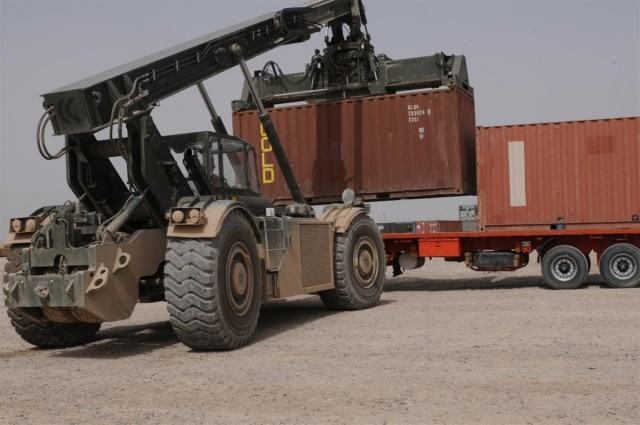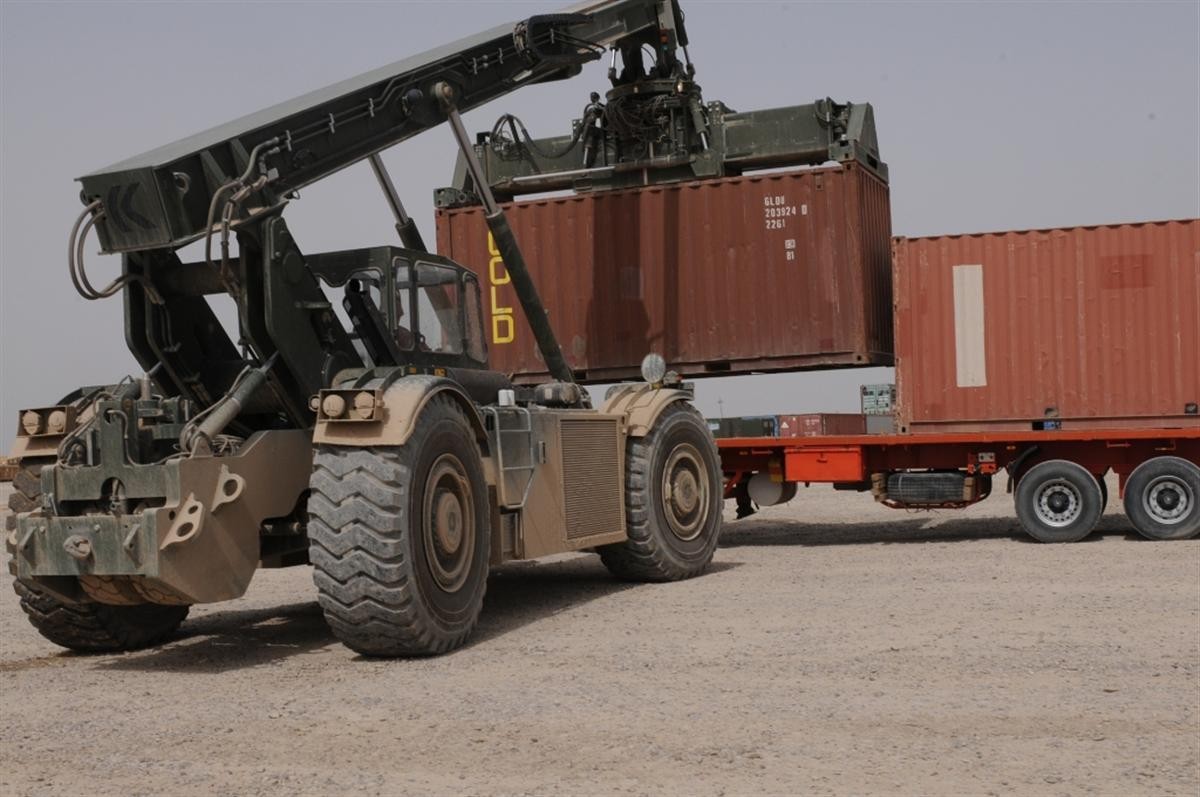CONTIGENCY OPERATING BASE SPEICHER, Iraq - Some Soldiers use video games to pass the time in Iraq, but one Soldier said he actually gets to play them at work.
Spc. Christopher A. Ward, a Rough Terrain Container Handler operator with the 611th Seaport Operations Company, said he tries to make the deployment as fun as he can, especially when operating the RT-240 Kalmar.
"It's just like playing a little video game in there," said Ward, a Nampa, Idaho, native. "You've got to hook up all the corners."
Soldiers with the 611th SOC out of Fort Eustis, Va., 541st Combat Sustainment Support Battalion, 15th Sustainment Brigade, 13th Sustainment Command (Expeditionary) use the RT-240 Kalmar to move containers throughout the container yard at Contingency Operating Base Speicher, Iraq.
Sgt. Richard B. Laurey, the noncommissioned officer in charge of the container yard with the 611th SOC and a Washington native, said the Kalmars pick up 20 or 40-foot containers and stack them three high.
"The maximum capable weight is up to 50,000 pounds," he said. "Due to the conditions that they have been in and how long they have been out here, you (try to keep the weight) down to 30,000 to 35,000 pounds."
Ward downloads the containers off the trailers and puts them into specific lanes to be shipped out later to their final destination. Some of the containers are empty, but others are full of units' equipment and supplies, he said.
"When they need it, they will call or send a request in so we can upload it and have it shipped," he said.
Ward said he performs preventive maintenance checks and services before, during and after he uses the vehicle.
Laurey said if the containers are waiting to be picked up by another convoy, they spend roughly five days in the container yard. A container that is waiting to be picked up by a local unit should sit in the container yard no more than two or three days, he said.
"It gets pretty busy, but it can also be laid back," said Ward. "A few convoys come in, download and upload. It can vary in numbers, from two connexes to 50 or 100 connexes, depending on where they're coming from and where they're going."
Ward said he learned how to drive the Kalmar on the job, after arriving in Iraq.
"I'm getting a lot of experience," he said. "It's fun; it makes the day go by faster."
Laurey said they sometimes encounter oil leaks due to the high heat and the constant running of the vehicles, or if the hoses crack. The computer can overheat without air conditioning inside the Kalmar, and sand sometimes gets inside the equipment.
"We have to keep a watchful eye and make sure we blow all the equipment out with air, (and) try to keep the door closed as much as possible," he said.
Ward said the yard is not entirely flat, so they have to drive the Kalmar slowly and cautiously. He said the drivers have to keep in mind that the containers may not be fully packed and could be unbalanced.
"Those are the main things you've got to worry about, potholes and a lot of different variable in weight," he said. "It's time consuming but it's just something that you've got to be very careful (with), because you're holding about 4 to 8 tons."




Social Sharing